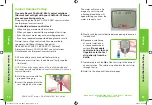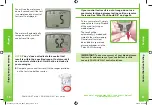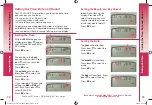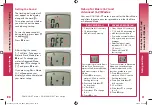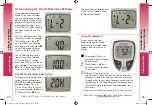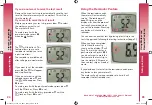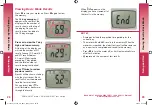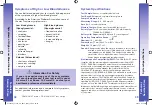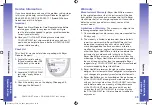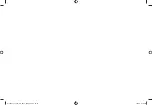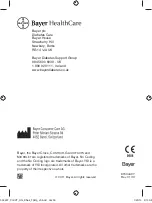
C
ONTOUR
®
XT meter C
ONTOUR
®
N
EXT
test strips
41
T
e
c
hnical,
Service & Care
Need Help? 0845 600 6030 (UK) / 1 890 920 111 (Ireland)
www.bayerdiabetes.co.uk
41
T
e
c
hnical,
Service & Care
40
T
e
c
hnical,
Service & Care
Specifi
cations
Principles of the Procedure:
The C
ONTOUR
®
N
EXT
blood glucose
test is based on measurement of electrical current caused by the
reaction of the glucose with the reagents on the electrode of the
strip. The blood sample is drawn into the tip of the test strip through
capillary action. Glucose in the sample reacts with FAD glucose
dehydrogenase (FAD-GDH) and the mediator. Electrons are
generated, producing a current that is proportional to the glucose in
the sample. After the reaction time, the glucose concentration in the
sample is displayed. No calculation is required.
Comparison Options:
The C
ONTOUR
®
XT system is designed for
use with venous and capillary whole blood. Comparison to a
laboratory method must be done simultaneously with aliquots of the
same sample. Note: Glucose concentrations drop rapidly due to
glycolysis (approximately 5 – 7% per hour).
4
Limitations
Preservatives:
Blood may be collected by healthcare professionals
into test tubes containing heparin. Do not use other anticoagulants
or preservatives.
Altitude:
Up to 6301 meters does not significantly affect results.
Alternative Site Testing:
Not for use with Alternative Site Testing.
Lipaemic Specimen:
Cholesterol concentrations >30.2 mmol/L or
triglyceride concentrations >53.2 mmol/L may produce inaccurate
results.
Peritoneal dialysis solutions:
Icodextrin does not interfere with
C
ONTOUR
®
N
EXT
test strips.
Xylose:
Do not use during or soon after xylose absorption
testing. Xylose in the blood will cause an interference.
Contraindications:
Capillary blood glucose testing may not be
clinically appropriate for persons with reduced peripheral blood flow.
Shock, severe hypotension, hyperosmolar hyperglycaemia and
severe dehydration are examples of clinical conditions that may
adversely affect the measurement of glucose in peripheral blood.
5
Interference:
Reducing substances occurring in the blood naturally
(uric acid, bilirubin) or from therapeutic treatments (ascorbic acid,
paracetamol) will not significantly affect results. The limiting concen-
trations of these compounds are listed on your test strip insert.
Specifi
cations
The following symbols are used throughout the product
labeling for the C
ONTOUR
®
XT blood glucose monitoring
system (meter packaging and labeling, and reagent and
control solution packaging and labeling).
Symbols Used
Use by date
(last day of month)
Do not reuse
Batch code
Sterilized using
irradiation
Temperature
limitations
Recycle
Packaging
Consult instructions
for use
Batteries must be
disposed of in
accordance with
laws in your
country. Contact your
competent local authority for
information on the relevant
laws regarding disposal and
recycling in your area.
The meter should be treated
as contaminated and
disposed of according to
local safety rules. It should
not be disposed of with
waste electronic equipment.
Contact your healthcare
professional or local waste
disposal authority for medical
waste disposal guidelines.
In Vitro
Diagnostic
Medical Device
Manufacturer
Caution
Catalogue number
Control Range Normal
Control Range Low
Control Range High
81534497_CntrXT_UG_ENuk_FpBp_v0.indd 40-41
81534497_CntrXT_UG_ENuk_FpBp_v0.indd 40-41
1/25/13 8:13 AM
1/25/13 8:13 AM


